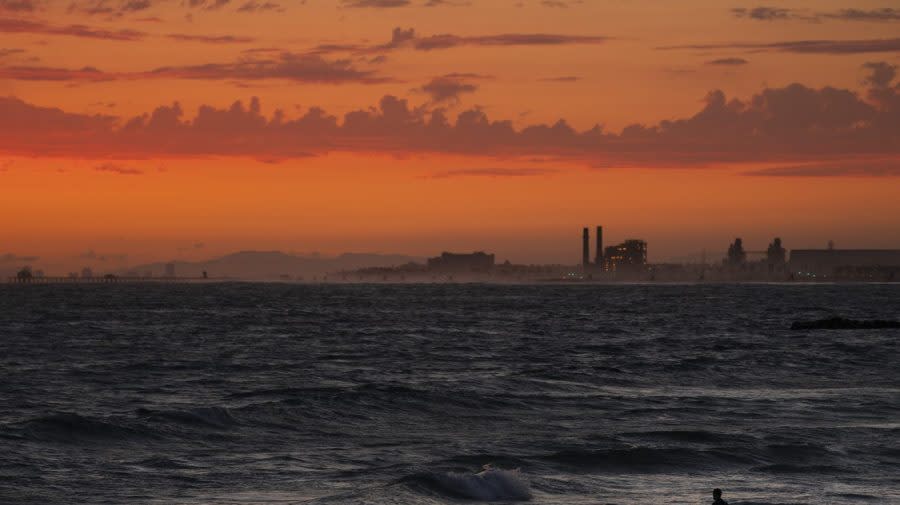Carbon dioxide levels rising ‘faster than ever’ amid unprecedented heat: Report

Levels of planet-heating carbon dioxide gas in the atmosphere are rising “faster than ever,” according to a report published Thursday.
That spells serious disruption for the climate in decades to come — even as human society struggles to adapt to the effects of warming already “locked in” by historic burning of fossil fuels.
On Thursday, scientists from the National Oceanographic and Atmospheric Administration (NOAA) and Scripps Oceanographic Institute found that carbon dioxide in the atmosphere had reached a record 427 parts per million.
And that wasn’t all. “Not only is [carbon dioxide] now at the highest level in millions of years, it is also rising faster than ever,” Scripps director Ralph Keeling said.
The findings come in the wake of other climate alarms: 2023 was the hottest year on record, had the hottest ocean temperature on record and saw a record number of billion-plus dollar disasters. The Earth is just coming off a year of back-to-back monthly heat records, capped by May 2024’s crowning as the hottest May in human history.
Carbon dioxide in the atmosphere can be thought of as the Earth’s ratio of dead organisms to living ones: the more life, the less floating, heat-trapping carbon.
As such, carbon dioxide concentrations tend to peak in the Northern Hemisphere every May, before growing trees and plants can suck levels back down to fuel their growth throughout the summer.
That’s an annual flux described as the Keeling Curve, named for Scripps scientist Charles David Keeling. The father of the current Scripps director, the older Keeling discovered both the annual pattern of carbon flux and the relentless, year-over-year rise in its annual peaks. Those peaks drove ever higher as the world burned more fossil fuels, which come from the highly-compressed bodies of long-dead ancient organisms.
“Each year achieves a higher maximum due to fossil-fuel burning, which releases pollution in the form of carbon dioxide into the atmosphere … [which] just keeps building up, much like trash in a landfill,” Ralph Keeling added.
Carbon dioxide is the molecular detritus left over after organic material — wood, coal, gas, oil — has been burned, and once in the atmosphere it acts like an invisible, heat-trapping blanket that absorbs the sun’s radiation and keeps terrestrial warmth from radiating back into space.
Because a warmer atmosphere is thirstier, more energetic and ultimately more powerful rising carbon dioxide thus fuels more powerful hurricanes, hotter heat waves, bigger floods and longer, drier droughts.
But these effects aren’t immediate: The warming effects of an emission take at least a decade to kick in, and may take far longer.
That means that the present day’s record heat comes from fuels burned in the early 21st century — and that the burning now occurring is committing the earth to additional heating for decades to come.
The U.S. government expects this pollution to keep piling up for at least the next generation, though the International Energy Agency (IEA) projects that global oil burning might peak this decade.
In the meantime, carbon dioxide levels are themselves increasing at record levels. The early-2024 rise in carbon dioxide concentrations was the highest in history, and the increase from 2022 to 2024 may have been the largest two-year jump in the May carbon dioxide peak ever recorded. (Scripps and NOAA disagree over whether it tied or slightly surpassed the 2018 to 2020 jump.)
One alarming detail in the new report is that the Earth hit these record levels despite a piece of good news: A 2023 report found that human-caused global carbon dioxide emissions might have plateaued.
But scientists have long warned that a principle difficulty in dealing with climate change is that after a certain point, it may become self-reinforcing.
The current emission plateau may mitigate the global climate later this century — but it has little effect on present-day carbon dioxide levels, or heat.
Instead, the heat now gripping the world, fueled by past burning of fossil fuels, is itself releasing new plumes of carbon dioxide — such as the wildfires in Canada’s boreal forest, the U.S. Mountain West and the Amazon rainforest.
Copyright 2024 Nexstar Media, Inc. All rights reserved. This material may not be published, broadcast, rewritten, or redistributed.
For the latest news, weather, sports, and streaming video, head to The Hill.


